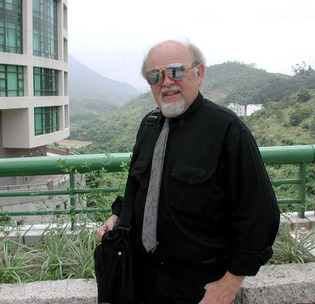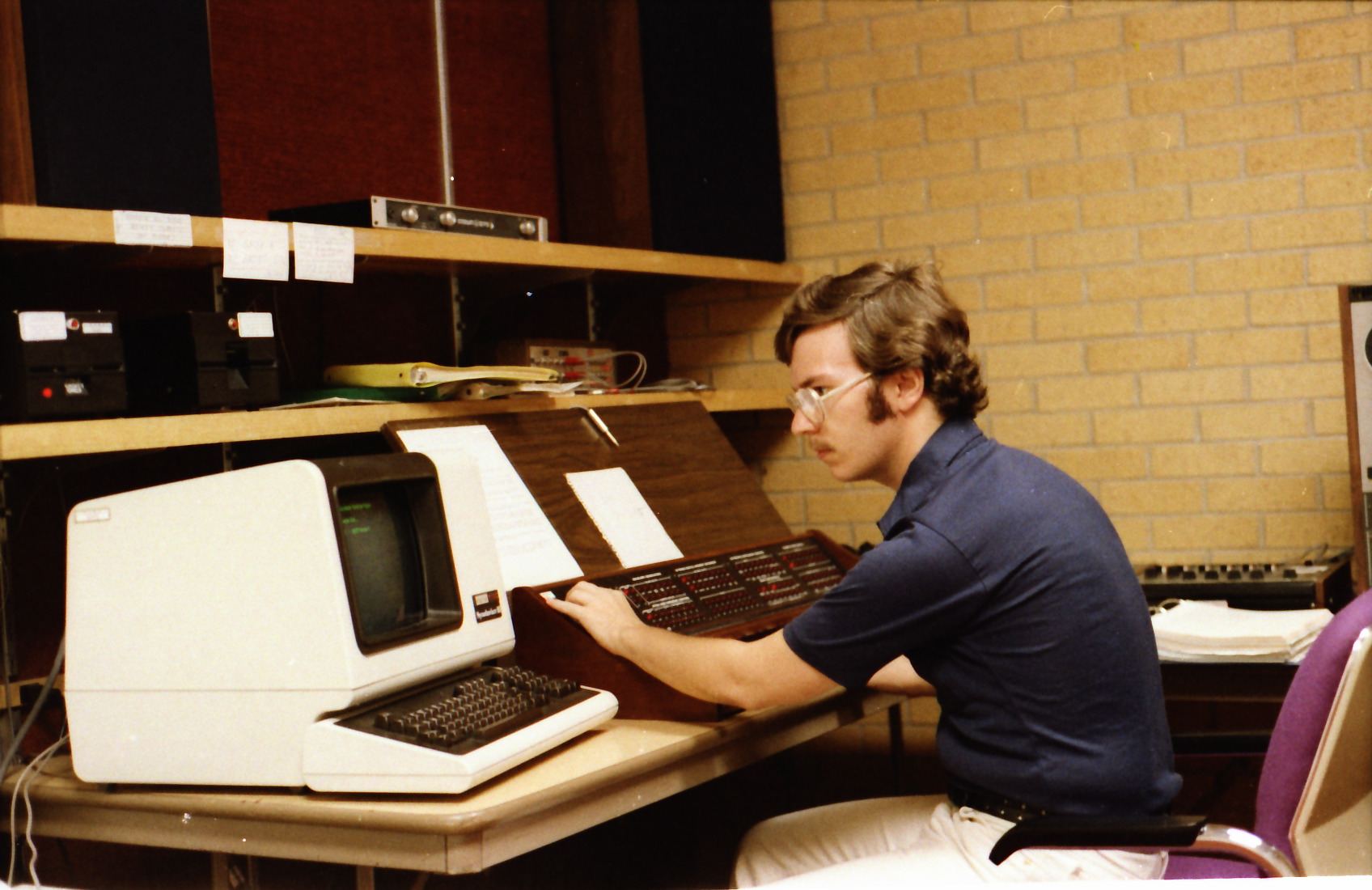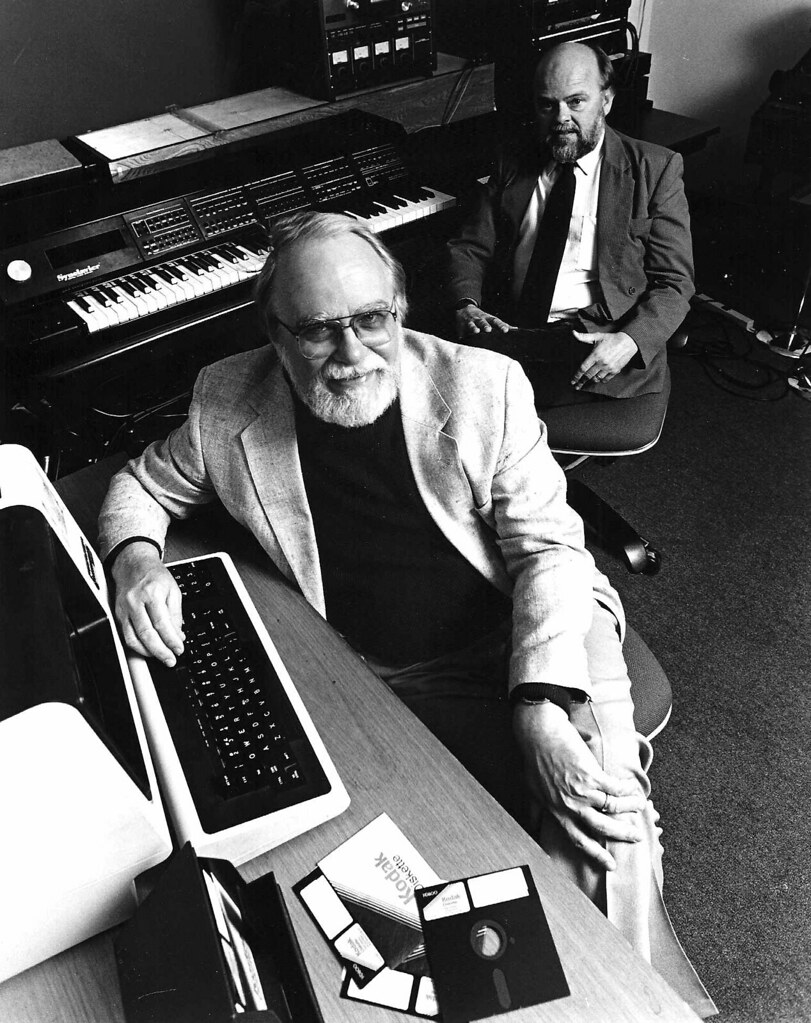Phil Winsor
May 10, 1938 – January 24, 2012

I am saddened to learn that Phil passed away in January. Here is his official obituary.
I met him in my very first class at North Texas when I started my doctorate in 1982. It turns out that it was also his first class teaching at North Texas. He was hired to replace the late composer Merrill Ellis, who founded the Electronic Music Center (EMC). It was an “intermedia” course which displayed his talent in many media besides music – photography and video (both using something called “film” in those days), dance, speech, and many others – including those weird 60s throwback graphics created by putting a bowl of water on an overhead projector and swirling oil paints on top. The College of Music had just opened its own intermedia theater that was physically part of the composition wing. It became not only a performance space for concerts by visiting composers – including hosting the International Computer Music Conference (ICMC) in 1981 (my first visit to NT), but also a staging area for our experiments.

The EMC became the Center for Experimental Music and Intermedia (CEMI) with Phil and fellow composition faculty member Larry Austin as co-directors. The new music ensemble, directed by composition faculty member Tom Clark, performed works from “the canon” as well as student compositions in what was by then dubbed the Merrill Ellis Intermedia Theater.
In 1982, Ellis’ original analog equipment – including Moog synthesizer serial number 3 – was still in use along with other “newer” instruments such as a donated ARP 2600. But the new kid on the block was a New England Digital Synclavier I. It’s hard to imagine now, but at that time, computers were just becoming widespread. We had access to the computer science department’s Vax 11-780 through VT-52 and VT-100 terminals in a tiny closet in the composition department. The Synclavier allowed us to hear the output from C programs that we wrote on the Vax. Even at the time, we were on the internet, so data transfer was simple. The Synclavier had its own computer connected to the LAN and was controlled through a VT-100 and keyboard. I bought a screaming 2.77 Mhz PC with a whopping 640k of memory in 1983, and Phil bought the same model at the same store a week later. Phil began writing programs in BASIC on his PC for performance on the Synclavier. This led to several book he authored on algorithmic composition in BASIC. I remained in C having acquired “Turbo C” for the PC. In 1988 Phil and I co-authored Computer Music in C (clever, huh?).

The following year the Synclavier II was acquired. It was in such heavy use that a second unit was purchased the following year. They were enormously expensive at that time. Zappa could afford one, but an ordinary composer wouldn’t dream of it. Perhaps its price tag is the reason Phil and Larry swapped their guru shirts for suit jackets in this CEMI publicity photo:

Phil helped set up a computer music program at Taiwan’s National Chiao Tung University in Hsin Chu. I was to join him there in 1989 – I even took a year of Mandarin – but other events intervened. For several years he travelled there and enjoyed considerable success.
Phil enjoyed experimenting with technology, but never for its own sake. He was much more interested in the creative possibilities that these new technologies afforded artists.
